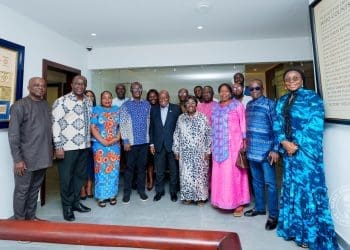Three Chinese galamseyers have been arrested by the Central North Regional Police Command at Twifo Denyase in the Central Region.
The arrests of the Chinese galamseyers were part of an intensified police operation targeting illegal mining activities along the already severely polluted Pra River.
During the operation, the Ghana Police Service recovered two pump-action guns, 22 cartridges, and two excavators. Authorities also destroyed several chanfang machines used in the mining activities.
Speaking at a press briefing, Central North Regional Police Commander, DCOP Abraham Acquaye, stated, “upon the arrival of police, several Ghanaian accomplices fled the scene—some swimming across the river to evade capture.”
He added that while the Chinese galamseyers who were initially arrested tried to escape, they were later tracked down and arrested at their residence.
Over a four-day period, the command has arrested a total of 23 individuals connected to illegal mining and has seized six excavators in addition to other heavy-duty mining machinery.
Some equipment that could not be removed from the scene was destroyed on-site to ensure it could not be used again.
Despite the ongoing crackdown, DCOP Acquaye pointed to persistent challenges, including interference from local politicians and influential persons who attempt to obstruct police efforts.
He also emphasised that the command faces serious logistical limitations, noting a lack of essential items like bulletproof vests, life jackets, and vehicles needed to protect officers and carry out operations effectively.
Effects of galamsey
Galamsey has long posed significant challenges to the country’s environmental and socio-economic stability.
In recent years, the increasing involvement of foreign nationals, particularly Chinese miners, has drawn considerable public attention and concern.
Water bodies such as the Pra, Ankobra, and Offin rivers have become heavily polluted with mercury and other toxic chemicals used in gold extraction, threatening aquatic life and the health of communities that rely on these rivers for drinking water and agriculture.











